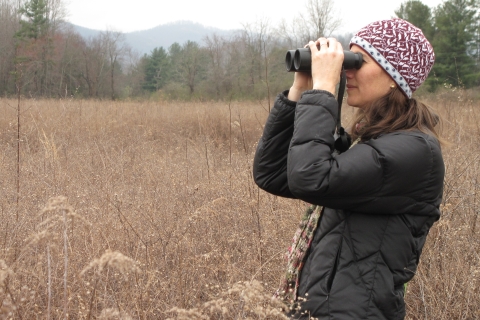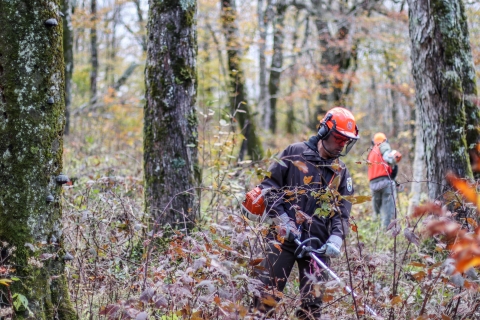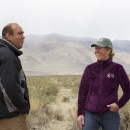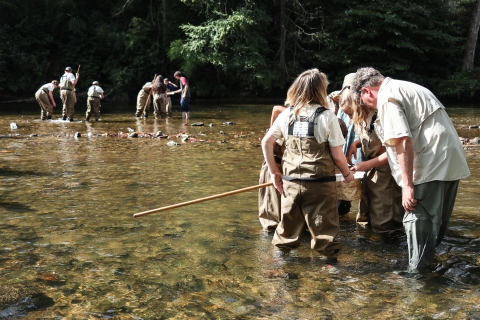About Us
From the top of North Carolina's Mount Mitchell, the highest peak in the eastern United States, one can see where streams flow east to the Atlantic Ocean and west to the Mississippi River. Across that landscape are caves and abandoned mines used by bats, wetlands that are home to carnivorous plants and North America's smallest turtle, and rivers rich in a diversity of fishes, mussels, and other aquatic life. We are stewards of those plants and animals, working with partners to conserve the most imperiled of those plants and animals and helping other federal agencies conserve our natural heritage.
What We Do
The conservation of our nation’s most imperiled species is at the heart of our office’s work. It drives what we do, from reviewing federally funded or authorized projects, to proactively working recover rare species. All of our work is done in conjunction with partners, including state wildlife agencies, tribes, other federal agencies, private industry, colleges and universities, and non-profit organizations.
Our Organization
As a field office of the U.S. Fish and Wildlife Service, we are charged with implementing certain of the Service's programs. Below you'll find a list, with links to more information about the programs we carryout for western North Carolina and southern Appalachia.
Our Species
Our staff are experts on several federal threatened and endangered species of the upper North Carolina Piedmont and southern Appalachia. Learn more about the species that are the focus of our conservation efforts.
Projects and Research
Working with partners to conserve plants and animals from the top of the highest mountains in the eastern United States to mountain rivers rich with life is the core of what we do. Learn more about some of our efforts.
Get Involved
As a small office with a large work area, partnering with others is a foundation of our work - whether it be funding research, coordinating on-the-ground conservation efforts, or shepherding the next generation of conservation leaders. There may be opportunities for you to get involved conserving some of the rarest species and special habitats of southern Appalachia, either with us, or with one of our myriad partners.



















